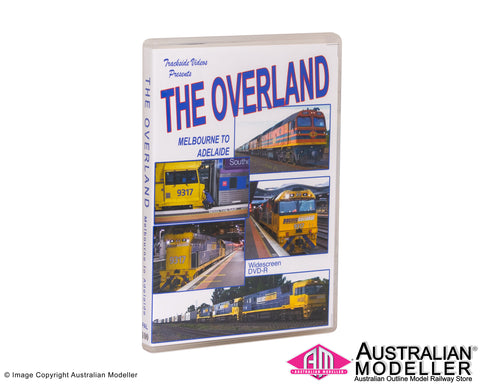The broad gauge Melbourne to Adelaide line (via Ballarat) became operational when, back in 1887, both the Victorian side (starting in Melbourne suburbia at Sunshine in 1884) and the South Australian side (starting at Mile End in 1883) were joined at the SA/Vic border. Known to Victorians as the Adelaide Express and to South Australians as the Melbourne Express, a passenger service between the two cities commenced the same year. It was given its current name, The Overland, in 1926.
It was originally an overnight train run jointly by the two state governments. Initially non air-conditioned sleeping cars were hauled by (twin where necessary) A2 Class and 500 Class steam locomotives in Victoria and South Australia respectively, but from 1949 Corten Steel air-conditioned carriages were introduced in maroon livery with a fluted stainless steel panel on each side and a black roof. In the 1950s steam gave way to B Class and 500 Class diesel electric locomotives but later on S, N, X and 930 Class could also be seen on The Overland. In 1975, Australian National took over the SAR operation and became the joint operator with the Victorian Railways and a Motor Rail operation was added. From 1994 Australian National became the sole operator of The Overland and, with the standard gauge Melbourne to Adelaide line (via Geelong) opening in 1995, AN began to use their CLP Class locomotives on this now standard gauge service. With the privatisation of Australian National in 1997, the passenger rolling stock was sold to Great Southern Rail who contracted National Rail to haul the service with their NR Class locomotives. Following an extensive upgrade to ‘day travel’ seating in 2007, the train now features ‘red’ and ‘premium red’ class seating and a licenced buffet car, and is hauled by Pacific National NR or 93 Class locomotives. In 2013, Great Southern Rail reduced the service from 3 to 2 per week each way.
Locomotive classes seen in action include N, NR, 2200 and 93 and stabled include A, B, DL, G, P, T, X, Y, 72, 81 and 830, whilst self propelled rolling stock includes Sprinters, Velocities, XPT, Melbourne Metro and Adelaide Twin Car suburbans.
Approximate run time: 96 minutes.

